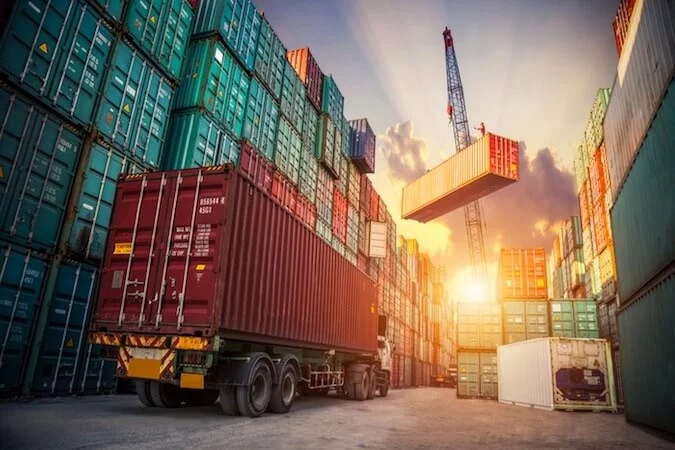February 17, 2023
Shipping containers play a vital role in the global trade industry, and ensuring their safe and efficient lifting is paramount. Whether you're relocating a container or preparing it for maritime transport, proper lifting techniques are essential to protect workers and avoid container damage. This article explores various methods for lifting shipping containers safely and efficiently, focusing on container lifting as the central topic. In addition to traditional slings, another effective option is the use of automatic lifting hooks. These hooks are designed to securely and effectively lift containers, minimizing manual labor and reducing the risk of accidents and injuries.

Automatic release hooks operate by attaching to the top corner castings of the container and lifting it using a crane. They can be operated remotely, enhancing safety by keeping workers at a safe distance during the lifting process. Moreover, these crane hooks can be adjusted to accommodate containers of varying sizes and weights, making them a flexible solution for multiple container types and loads.
Index
Lifting with Gantry Cranes
Gantry cranes are the most common lifting equipment used for shipping containers, capable of handling containers of all sizes and weights. There are two main types of cranes used for container lifting: mobile cranes and gantry cranes. Mobile cranes are versatile and can move around the site, making them ideal for loading and unloading containers from trucks and ships. Gantry cranes, on the other hand, are stationary and typically found in ports or shipyards.
Discover More About Elebia Hooks
Auto Release Hooks Lifting Hooks
Â
Alternative Methods for Lifting Sea Containers
There are several methods used to lift shipping containers, including forklifts, cranes, and hydraulic lift systems. Each method has its own advantages and limitations, and the choice of method depends on factors such as the container's weight, dimensions, and the site's conditions. Below are some of the most popular methods for container lifting:
Forklift Trucks
Forklifts are a common choice for lifting small shipping containers or moving containers within confined spaces. Forklifts have a maximum lifting capacity of 45,000 pounds, making them suitable for handling small to medium-sized containers. To lift a container with a forklift, the operator inserts the forks into the corner castings and raises the forks, lifting the container off the ground.
Hydraulic Lift Systems
Hydraulic lift systems are widely used for lifting shipping containers, particularly in shipyards and container terminals. These systems utilize a series of hydraulic cylinders to raise the container off the ground, allowing for easy movement and transportation.
Container Lifting Jacks
Container lifting jacks are indispensable tools for safely and efficiently lifting shipping containers. When using container lifting jacks, it's crucial to follow appropriate safety measures to ensure a successful and secure lift.
Recommended Types of Slings
Choosing the right lifting slings is critical for safely and efficiently lifting shipping containers. The correct type of sling not only helps lift the container without damage but also prevents accidents and injuries. Here are some recommended types of slings for lifting shipping containers:
- Steel Cable Slings: Steel cable slings are among the most popular and versatile types of slings for lifting shipping containers. They are robust and durable, and their flexibility makes them suitable for a wide range of lifting applications. Steel cable slings can be used for both vertical and horizontal lifts and are often the preferred choice for lifting heavy containers.
- Chain Slings: Chain slings are another popular option for lifting shipping containers. They are exceptionally strong and can handle heavy loads, making them ideal for lifting larger containers. Chain slings can be used for both vertical and horizontal lifts and are frequently used with spreader bars to distribute the load more evenly.
- Synthetic Slings: Synthetic slings are lightweight and easy to handle, making them a great choice for smaller containers or when lifting containers in tight spaces. They are also resistant to corrosion and can be used in harsh environments. Synthetic slings are available in various materials, including nylon, polyester, and high-performance fibers like Dyneema.
- Flat Web Slings: Flat web slings, made from nylon or polyester, are perfect for lifting smaller shipping containers. They are lightweight and easy to handle, and their flexibility allows them to conform to the shape of the container. Flat web slings are also resistant to abrasion and have a high strength-to-weight ratio.
When selecting slings for lifting shipping containers, it's essential to consider the container's weight and dimensions, as well as the lifting environment. It's equally important to follow the manufacturer's instructions for use and inspect the slings before each lift to ensure they are in good condition. By choosing the right type of sling and using it correctly, you can lift shipping containers safely and efficiently.
Precision Sheet Metal,Custom Metal Enclosures,Custom Sheet Metal Enclosures,Sheet Metal Boxes
DONGGUAN TONJA INDUSTRIAL CO.LTD , https://www.tonjaism.com